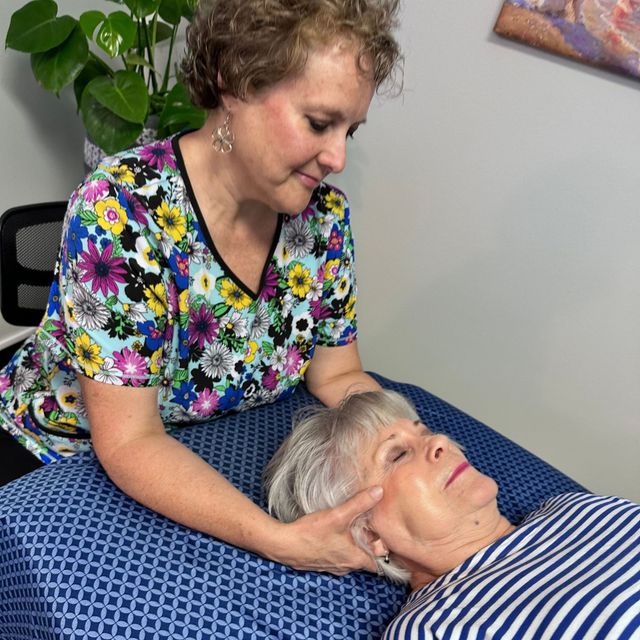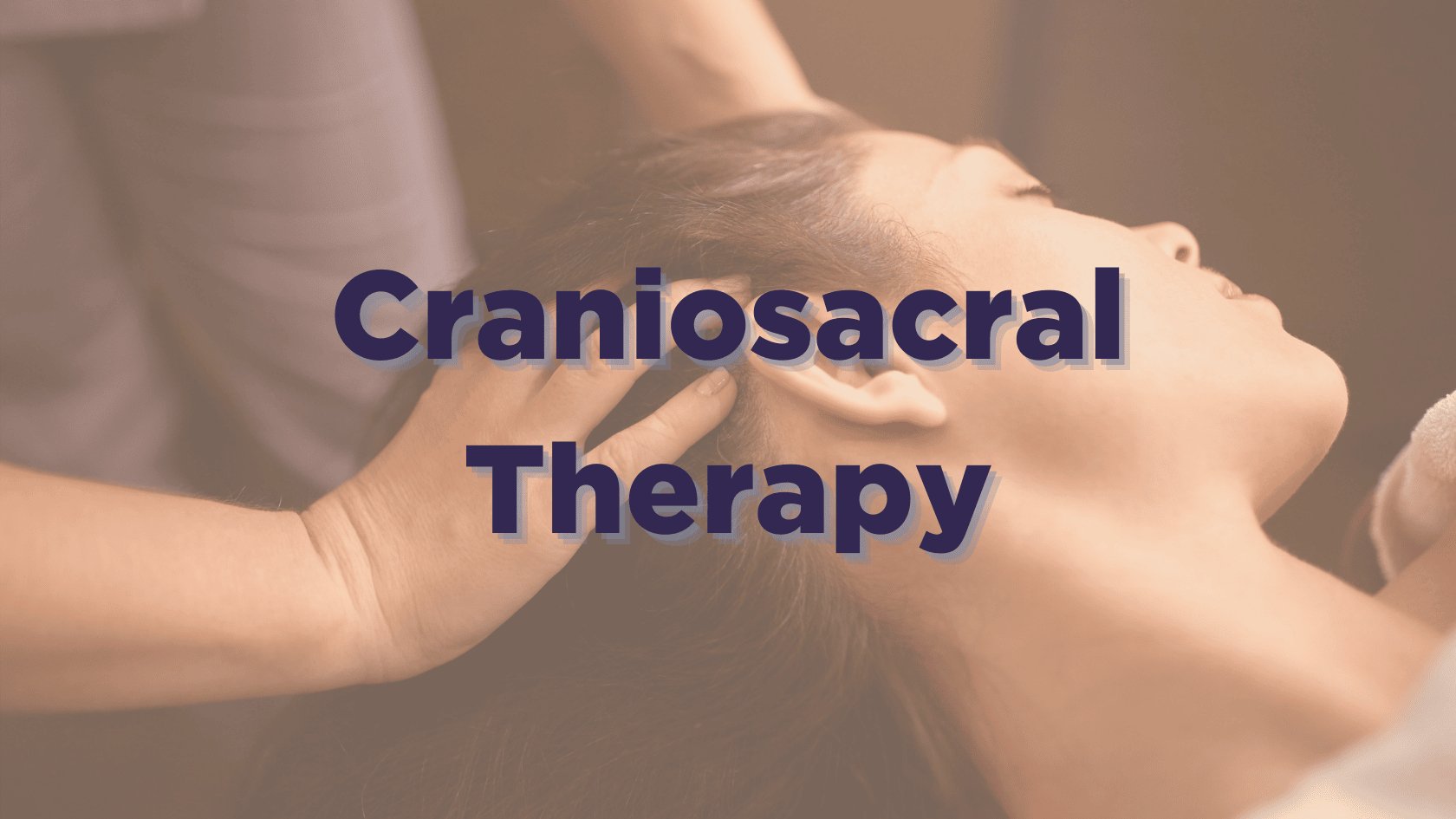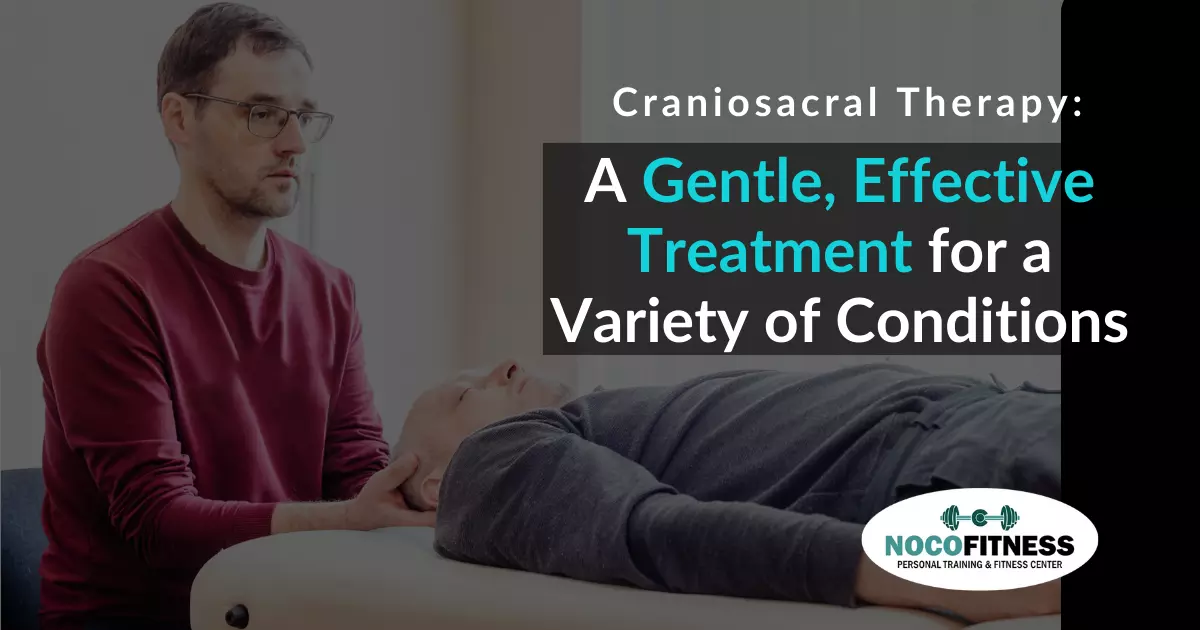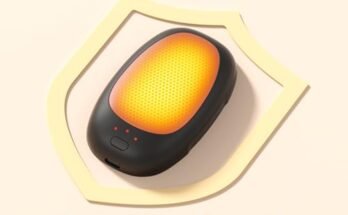Craniosacral therapy treats conditions like migraines, chronic pain, and stress-related disorders. It also addresses issues like TMJ and sleep disturbances.
Craniosacral therapy is a gentle, hands-on approach that focuses on the craniosacral system. This system includes the membranes and fluid that surround the brain and spinal cord. Therapists use light touch to release tension and improve overall health. People seek this therapy for relief from migraines, chronic pain, and stress-related disorders.
It can also help with temporomandibular joint (TMJ) issues and sleep disturbances. The therapy aims to enhance the body’s natural healing processes and promote well-being. Many find it to be a beneficial complement to traditional medical treatments.

Credit: www.family-seasons.com
Introduction To Craniosacral Therapy
Craniosacral Therapy (CST) is a gentle, hands-on treatment. It aims to relieve pain and stress. CST works on the craniosacral system, which includes the brain and spinal cord.
Many people seek CST for various health conditions. This therapy can provide relief and improve well-being. Let’s explore what CST is and its origins.
What Is Craniosacral Therapy?
Craniosacral Therapy involves light touch and gentle pressure. The therapist uses their hands to feel the rhythm of the craniosacral system.
They detect and release restrictions in the tissues. This helps improve the flow of cerebrospinal fluid. Improved fluid flow reduces pain and enhances health.
Therapists often use CST to treat headaches, neck pain, and stress-related disorders. It is also effective for chronic pain conditions.
History And Origins
Craniosacral Therapy originated in the early 20th century. Dr. William Sutherland, an osteopath, developed this technique.
He discovered the cranial bones could move slightly. This movement is essential for health. Dr. Sutherland’s work laid the foundation for CST.
Dr. John Upledger further developed CST in the 1970s. He expanded its application and brought it to a wider audience.
Today, many therapists use CST to help patients. It is a recognized and respected therapy worldwide.
| Conditions Treated | Examples |
|---|---|
| Headaches | Migraines, tension headaches |
| Neck Pain | Chronic neck pain, stiffness |
| Stress-Related Disorders | Anxiety, insomnia |
| Chronic Pain | Fibromyalgia, back pain |
Craniosacral Therapy is a natural and non-invasive treatment. Many people find it beneficial for improving their health.

Credit: www.femfirsthealth.com
How Craniosacral Therapy Works
Craniosacral Therapy (CST) is a gentle, non-invasive therapy. It focuses on the craniosacral system, which includes the membranes and fluid around the brain and spinal cord. By using light touch, practitioners aim to release tensions and improve the body’s natural healing processes.
Techniques Used
Several techniques are employed in Craniosacral Therapy. Here are some common ones:
- Palpation: Practitioners feel for rhythmic motions in the craniosacral system.
- Still Point Induction: Gentle pressure is applied to bring the body to a still point.
- Fascial Release: Light touch helps to release tension in the connective tissues.
- Energy Cysts Release: Focused touch helps to dissipate energy blockages in the body.
Role Of The Practitioner
The practitioner plays a crucial role in Craniosacral Therapy. Here’s what they do:
| Role | Description |
|---|---|
| Assessment | They assess the craniosacral rhythm and identify restrictions. |
| Guidance | They guide the body towards self-correction using gentle touch. |
| Support | They provide a supportive environment for healing. |
Practitioners are trained to feel subtle changes in the craniosacral system. They use their hands to apply gentle pressure. This helps to release restrictions and improve the flow of cerebrospinal fluid.
Through these techniques, Craniosacral Therapy can treat various conditions. These include migraines, chronic pain, and stress-related disorders. The therapy aims to enhance overall health and well-being.
Chronic Pain Relief
Craniosacral Therapy (CST) provides relief for those suffering from chronic pain. This gentle, hands-on approach helps the body release tension and alleviate discomfort. CST is effective for various pain conditions.
Migraines And Headaches
Many people suffer from migraines and headaches. CST can reduce their frequency and intensity. The therapy improves the flow of cerebrospinal fluid. This helps relieve pressure around the head.
Patients often notice a significant improvement after several sessions. CST is a natural and non-invasive treatment. It offers an alternative to medication.
Neck And Back Pain
Neck and back pain are common complaints. These can result from poor posture, stress, or injury. CST addresses the root causes of this pain. The therapist uses light touch to release restrictions in the soft tissues.
This helps improve mobility and reduces pain. Regular CST sessions can lead to long-term relief. Patients report feeling more relaxed and less tense.
| Condition | Benefits of CST |
|---|---|
| Migraines and Headaches | Reduces frequency and intensity, improves cerebrospinal fluid flow |
| Neck and Back Pain | Addresses root causes, improves mobility, reduces pain |
Mental Health Benefits
Craniosacral therapy offers numerous mental health benefits. It gently works on the craniosacral system. This system includes the membranes and fluids surrounding the brain and spinal cord.
This therapy can help people feel calmer and more balanced. Let’s explore some specific mental health benefits.
Stress And Anxiety Reduction
Stress and anxiety are common problems today. Craniosacral therapy can help reduce these issues. The therapy focuses on gentle touch and relaxation.
During a session, the therapist uses light hand pressure. This helps release tension from the craniosacral system. People often feel more relaxed and less anxious after a session.
Studies show that this therapy can lower cortisol levels. Cortisol is a hormone linked to stress. Lower cortisol means less stress and anxiety.
Depression Management
Depression can affect anyone at any age. Craniosacral therapy can help manage symptoms of depression. The therapy helps improve the flow of cerebrospinal fluid.
Better fluid flow can enhance brain function. This can help lift the mood and reduce feelings of sadness. Many people report feeling more positive and hopeful after sessions.
The therapy also promotes better sleep. Good sleep is vital for managing depression. When people sleep better, they often feel better overall.
Pediatric Applications
Craniosacral therapy (CST) offers numerous benefits for children. It is non-invasive and gentle, making it ideal for treating various pediatric conditions. Parents often seek CST for its holistic approach to health and well-being.
Treating Infants
Infants may face several challenges at birth. CST can help address these issues effectively. Common conditions treated include colic, breastfeeding difficulties, and sleep disturbances.
Colic: CST helps in relieving colic symptoms by reducing tension in the baby’s body.
Breastfeeding Difficulties: CST aids in improving latch and overall breastfeeding success.
Sleep Disturbances: CST promotes better sleep patterns, making babies more comfortable.
Childhood Disorders
Children of different ages can benefit from CST. It offers relief for a variety of childhood disorders.
Attention Deficit Hyperactivity Disorder (ADHD): CST helps in calming the nervous system, improving focus and behavior.
Autism Spectrum Disorders (ASD): CST can support better sensory processing and reduce anxiety.
Ear Infections: CST promotes fluid drainage, reducing the frequency of ear infections.
Asthma: CST can assist in improving respiratory function and reducing asthma symptoms.
| Condition | Benefits of CST |
|---|---|
| Colic | Reduces tension and discomfort |
| Breastfeeding Difficulties | Improves latch and feeding |
| Sleep Disturbances | Promotes better sleep patterns |
| ADHD | Calms the nervous system |
| ASD | Supports sensory processing |
| Ear Infections | Promotes fluid drainage |
| Asthma | Improves respiratory function |
Parents seeking natural solutions for their children’s health often turn to CST. This gentle therapy can provide significant relief and improve overall well-being.
Post-traumatic Recovery
Craniosacral Therapy (CST) offers significant benefits for post-traumatic recovery. This gentle therapy helps the body heal from various traumas. It is effective in reducing pain and improving overall well-being. CST is ideal for individuals recovering from injuries and surgeries.
Injury Rehabilitation
CST aids in the rehabilitation of injuries. It helps alleviate pain and promotes faster healing. The therapy targets the central nervous system, ensuring a holistic recovery. Patients often experience reduced inflammation and improved mobility. CST also helps in managing stress, which is crucial for recovery.
Surgical Recovery
Craniosacral Therapy is beneficial for those recovering from surgery. It assists in reducing post-surgical pain and discomfort. The therapy helps in minimizing scar tissue formation. CST also boosts the immune system, aiding in quicker recovery. Patients often report feeling more relaxed and less anxious.
| Condition | Benefits of CST |
|---|---|
| Injury Rehabilitation |
|
| Surgical Recovery |
|
Sensory Processing Disorders
Sensory Processing Disorders (SPDs) can significantly impact daily life. These disorders affect how the brain processes sensory information. Individuals may struggle with sound, touch, taste, sight, or movement. Craniosacral Therapy (CST) offers a gentle approach to managing these challenges. CST helps the body relax and self-correct. This therapy is gaining popularity for treating various conditions, including Autism Spectrum and ADHD.
Autism Spectrum
Children with Autism Spectrum Disorder (ASD) often face sensory overload. They may have trouble with loud noises or bright lights. These can lead to anxiety and meltdowns. Craniosacral Therapy can help. By releasing tension in the body, CST improves sensory processing. Sessions involve gentle touches on the head and spine. Many parents report positive changes. Their children are calmer and more focused after CST.
Adhd
Attention Deficit Hyperactivity Disorder (ADHD) affects focus and behavior. Kids with ADHD often feel restless and distracted. Sensory issues can make these symptoms worse. Craniosacral Therapy offers relief. Gentle pressure on the skull and back helps the nervous system. This can improve concentration and reduce hyperactivity. Parents notice their children are more attentive and less impulsive after CST sessions.
| Condition | Symptoms | Benefits of CST |
|---|---|---|
| Autism Spectrum | Sensory overload, anxiety, meltdowns | Calmness, improved focus |
| ADHD | Restlessness, distraction, hyperactivity | Better concentration, reduced impulsivity |
- Calmness: CST helps children feel more relaxed and at ease.
- Improved Focus: Therapy sessions can enhance attention span.
- Reduced Hyperactivity: Gentle touches help reduce restlessness.
Enhancing Overall Well-being
Craniosacral therapy (CST) helps many health issues. It also improves overall well-being. This gentle, hands-on therapy targets the craniosacral system. It balances the body, mind, and spirit. Discover how CST can enhance your life.
Boosting Immunity
CST can strengthen the immune system. A balanced craniosacral system promotes better health. It boosts the body’s natural defenses. Regular therapy sessions can help you get sick less often.
| Benefit | Description |
|---|---|
| Stronger Immunity | Helps the body fight infections better. |
| Reduced Stress | Low stress levels lead to improved immunity. |
Improving Sleep
Many people struggle with sleep issues. CST can help improve sleep quality. It relaxes the nervous system. Relaxation leads to deeper, more restful sleep.
- Reduces insomnia
- Promotes relaxation
- Balances sleep cycles
Better sleep means better overall health. A well-rested body heals faster and performs better.

Credit: www.healthinomics.com
Frequently Asked Questions
Who Should Not Get Craniosacral Therapy?
People with recent head injuries, severe bleeding disorders, aneurysms, or infections should avoid craniosacral therapy. Consult your doctor first.
Who Would Benefit From Craniosacral Therapy?
Individuals with chronic pain, migraines, stress, or anxiety would benefit from craniosacral therapy. It also helps those with sleep disorders and trauma recovery.
What Part Of The Body Does A Craniosacral Therapist Primarily Affect?
A craniosacral therapist primarily affects the head, spine, and sacrum. They focus on the central nervous system.
What Are The Three Types Of Craniosacral Therapy?
The three types of craniosacral therapy are: Biodynamic Craniosacral Therapy, Upledger Craniosacral Therapy, and Visionary Craniosacral Work.
Conclusion
Craniosacral therapy offers relief for various conditions like migraines, chronic pain, and stress. Its gentle approach promotes overall well-being. Many patients find it beneficial for improving their quality of life. Consider craniosacral therapy as a complementary treatment option. Always consult with a healthcare professional for personalized advice.
Explore this therapy to enhance your health journey.



